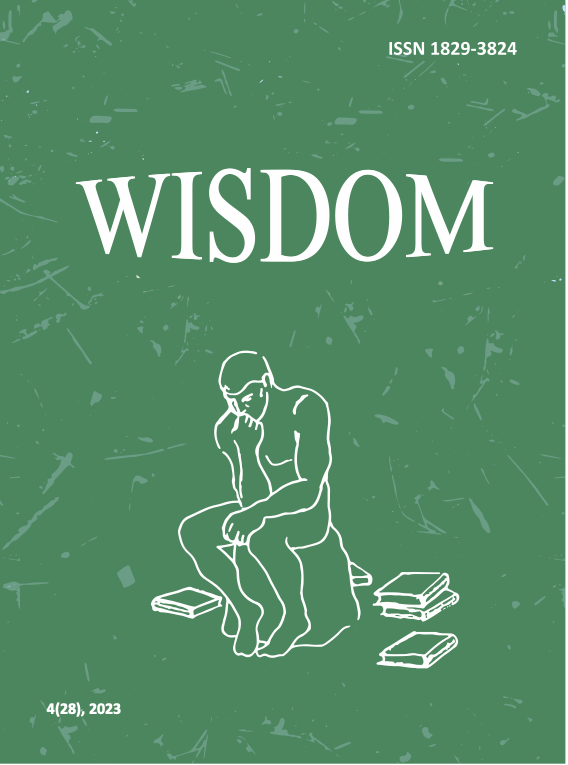Quantum Physics and Perennial Philosophy: Mirrors of Knowledge
DOI:
https://doi.org/10.24234/wisdom.v18i2.451Keywords:
Perennial Philosophy, Quantum Physics, Entanglement, Consciousness, Perennialism, Traditionalism, Renaissance Philosophy, Oriental PhilosophyAbstract
The core of what is defined as Perennial Philosophy is established by ancient traditions of metaphysical thought, which though arising from the most various historical contexts from East to West, outstandingly share some fundamental truths such as the mutual interrelation of all things. Even more astonishingly, however, is how these various truths which spread among different cultures, are currently backed up by the insights of contemporary physics.
This paper aims at underscoring how undeniably compelling, yet uncanny this bond is, primarily on the plane of knowledge, a broader knowledge substantiated by science and philosophy - the two, speak here an unknown language, yet with the same voice: the incommunicability of their truths overlapping with the incommunicability of their real experiences.
Grappling with the dazzling disclosures of these “mirrors of knowledge” is as fascinating as unavoidable. This study takes into account some of them, by uncovering how crucial they are both for the present, and the (albeit acknowledged by the past wisdom) future understanding of the reality we are entangled with.
Downloads
References
Assagioli, R. (1988). Lo sviluppo transpersonale (Transpersonal development, in Italian). Roma: Astrolabio.
Baigent, M. & Leigh, R. (2003). L’elisir e la pietra. La grande storia della magia (The elixir and the stone, in Italian). Milano: Net.
Blake, W. (1982). The complete poetry and prose of William Blake. New York: Anchor Books.
Bohm, D. (1996). Universo, mente, materia (Wholeness and the implicate order, in Italian). Como: Red Edizioni.
Bohm, D., & Krishnamurti, J. (1999). The limits of thought: Discussions between J. Krishnamurti and David Bohm. New York: Routledge.
Capra, F. (1999). Il Tao della fisica (The Tao of physics, in Italian). Milano: Adelphi.
D’Adamo, A. (2015). Science without bounds: A synthesis of science, religion and mysticism. Seattle: CreateSpace.
Davies, P. C. W., & Brown, J. R. (1986). The Ghost in the atom. New York: Cambridge University Press.
Eliade, M. (1984). Tecniche dello yoga (Techniques of yoga, in Italian). Torino: Bollati Boringhieri.
Evola, J. (2010). Lo Yoga della Potenza (The Yoga of power, in Italian). Roma: Mediterranee.
Fasoli, D. (1999, June 20). Il pensiero che oltrepassa la parola (The thought that goes beyond the word, in Italian). L’Unità.
Friedman, N. (2012). Bridging science and spirit. Suffolk: The Woodbridge Group.
Guggisberg Nocelli, P. (2011). La via della psicosintesi (The way of psychosynthesis, in Italian). Firenze: L’Uomo Edizioni.
Huxley, A. (2009). The Perennial Philosophy, New York: Harper Collins.
La Porta, G. (2001). Giordano Bruno. Vita e avventure di un pericoloso maestro del pensiero (Giordano Bruno. Life and adventures of a dangerous master of thought, in Italian). Bologna: Bompiani.
Oldmeadow, H. (2013). The not-so-close encounters of western psychology and eastern spirituality. In Psychology and the Perennial Philosophy (pp. 35-59). Bloomington: World Wisdom.
Plato (2008). Timaeus. London: Penguin.
Pullia, F. (2004). Giordano Bruno tra Oriente e Occidente (Giordano Bruno between East and West, in Italian). In Testimone dell’infinito. Giordano Bruno 1600-2000 (Witness of the infinite. Giordano Bruno 1600-2000, in Italian) (pp. 74-79). Perugia: Ali&No Editrice.
Schuon, F. (1993). The transcendent unity of religions. Wheaton: Theosophical Publishing House.
Schuon, F. (2007). The perennial philosophy. In The underlying religion. An introduction to the Perennial Philosophy (pp. 243-250) Bloomington: World Wisdom.
Sgalambro, M. (1990). Anatol. Milano: Adelphi,
Siniscalco, L. (2020, Maggio – Dicembre). Unità metafisica e pluralità religiosa. Scenari possibili, a partire dalla Philosophia Perennis (Metaphysical unity and religious plurality. Possible scenarios, starting from the Philosophia Perennis, in Italian). Nuovo giornale di Filosofia della religione (New Journal of Philosophy of Religion, in Italian), 13/14. Retrieved from https://www.academia.edu/44841555/UNIT%C3%80_METAFISICA_E_PLURALIT%C3%80_RELIGIOSA_SCENARI_POSSIBILI_A_PARTIRE_DALLA_PHILOSOPHIA_PERENNIS
Steuco, A. (2018). De perenni philosophia libri X. London: Forgotten Books.
Teodorani, M. (2007). Entanglement (Entanglement, in Italian). Cesena: Macro Edizioni.
Teodorani, M. (2011). Sincronicità (Synchronicity, in Italian). Cesena: Macro Edizioni.
Teodorani, M. (2012). Bohm. La fisica dell’inifinito (Bohm, the physics of infinity, in Italian). Cesena: Macro Edizioni.
Wolf, F. A. (1986). Body quantum: The new physics of body, mind and health. New York: McMillan.
Yates, F. (1964). Giordano Bruno and the hermetic tradition. London: Routledge and Kegan Paul.
Zolla, E. (1990). Verità segrete esposte in evidenza (Secret truths exposed in evidence, in Italian). Venezia: Marsilio.
Zolla, E. (1999). La Filosofia Perenne. L’incontro delle tradizioni d’Oriente e d’Occidente (The perennial philosophy. The meeting of East and West traditions, in Italian). Milano: Mondadori.
Zolla, E. (2009). Gli arcani del potere (The arcana of power, in Italian). Milano: Bur.
Downloads
Published
How to Cite
Issue
Section
License
Copyright (c) 2021 Author and scientific journal WISDOM

This work is licensed under a Creative Commons Attribution-NonCommercial 4.0 International License.
Creative Commons Attribution-Non-Commercial (CC BY-NC). CC BY-NC allows users to copy and distribute the article, provided this is not done for commercial purposes. The users may adapt – remix, transform, and build upon the material giving appropriate credit, and providing a link to the license. The full details of the license are available at https://creativecommons.org/licenses/by-nc/4.0/.















